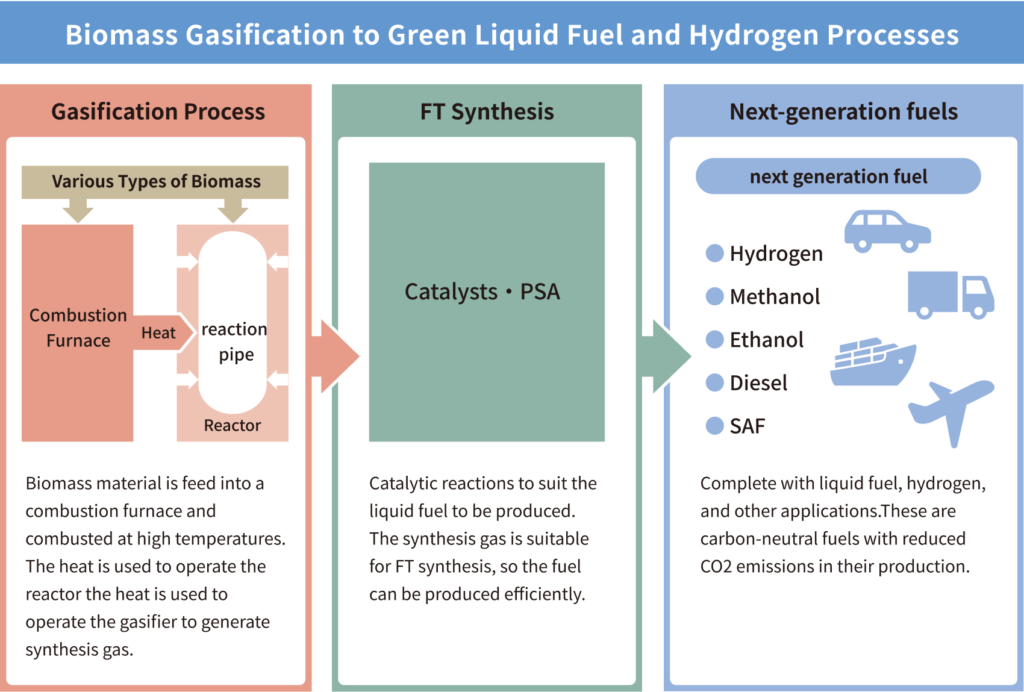
Synthetic Fuels & Hydrogen
Liquid Synthetic Fuel Utilization
Biomass Produced Clean Fuel
Realistic, Next-Generation Energy
In order to meet the current “greenhouse gas reduction targets,” countries and industries around the world are focusing on technological development. Particular attention is being paid to, “storable green liquid fuels” that are technically and economically feasible and replaces fossil fuels.
To meet this demand, we have developed a technology to produce biomass gas by effectively utilizing agricultural crop residues and waste.
By utilizing the appropriate catalysts for this carbon-neutral energy source, we also produce green liquid fuels. This will help convert many underutilized biomass wastes into energy and contribute to the realization of sustainable, next-generation energy.

Click here to download Liquid Synthetic Fuel Utilization catalog
Biomass Methanol
Biomass Methanol is a clean methanol produced from biomass, which is produced by chemical conversion of organic matter obtained from agricultural residues and wood waste. It is a renewable energy source that can be used not only as a fuel but also as a raw material in the chemical industry, and it is attracting attention as an environmentally friendly energy source that does not emit toxic substances during combustion.
It is gaining attention as an environmentally friendly energy source that does not emit toxic substances during combustion.
First Generation Bioethanol
Bioethanol is a so-called brewed ethanol produced by fermentation of biomass such as sugarcane and corn.
It can be used as an alternative fuel to gasoline. Since it is derived from plants, it can be said that it does not emit additional total amounts of CO2emissions because it is derived from plants, and due to the fact that it is capable of being produced using the age-old technology of fermentation.
It is already being produced on a large scale in Brazil and other countries.
Second Generation Liquid Biofuels
This is a liquid fuel made from inedible biomass that does not compete with food.
Conventional bioethanol was made from edible plants such as sugarcane, corn, and sugar beets, which competed with food and caused grain markets to skyrocket.
In contrast, fuels that can be produced from agricultural waste such as wood waste and rice straw, i.e., inedible plants, are called second-generation bio-liquid fuels.
Hydrogen
Hydrogen is used in liquid fuel rockets due to being stable as a liquid, usually at temperatures as low as -253°C, has small energy density, and relatively light.
For use in automobiles and other applications, it is able to be produced by electrolysis of water using excess green power, although infrastructure for high pressure and low temperatures is required.
It is attracting attention as an environmentally friendly energy source that does not emit carbon dioxide.
SAF(Sustainable Aviation Fuel)
Sustainable fuel is used in the aviation industry.
The size of fuel tanks and other equipment in aircraft is limited, making it difficult to use hydrogen and batteries in relation to payload capacity and range.
The introduction of SAF, which has a higher energy density than hydrogen and batteries, is expected to be a major step forward in the aviation industry.
This is expected to help the aviation industry reduce carbon emissions and combat climate change.

